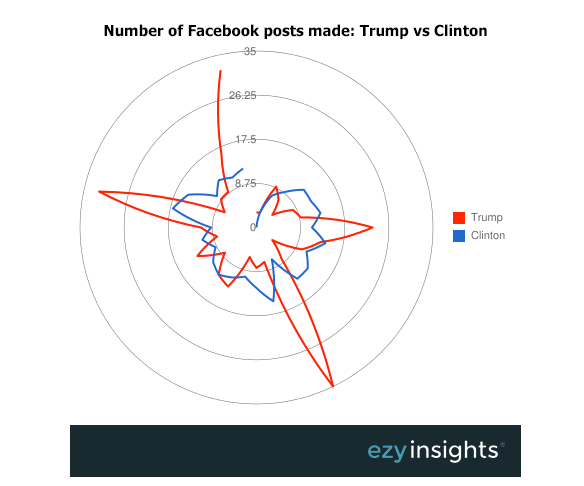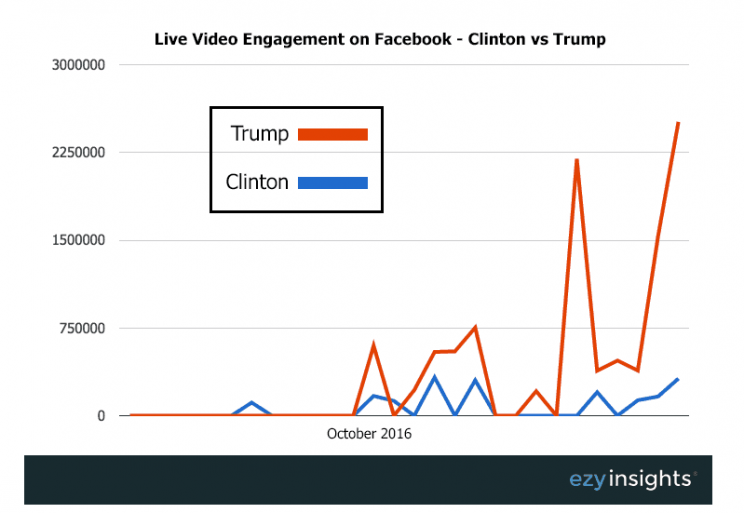Trump 'trounced' Clinton in his use of Facebook
On November 1, social media analytics platform EzyInsights put out a report that said Donald Trump’s campaign, “has utterly trounced Hillary Clinton’s” at utilizing Facebook. Eight days later, after Trump has won the presidency, Trump’s use of social media looks like more than just a footnote—it’s a major part of his victory story.
Trump, who had 12 million Facebook fans to Clinton’s 8 million, got more overall engagement on his official Facebook page at all times except for on October 9, the night of the second presidential debate.
At some points in October, Trump saw three times as much Facebook engagement as Clinton. The name of the November 1 report now looks prescient: “Trump as president? Thank Facebook.”

Trump particularly killed Clinton on both types of Facebook video: native and live. His campaign used Facebook video more than Clinton did (in October, Trump streamed 33 live Facebook broadcasts compared to 11 by Clinton) and used it better, consistently seeing higher engagement than Clinton’s videos.
The report points to another fascinating difference between Trump’s and Clinton’s use of Facebook video on the granular level: the number of posts per day. “What is remarkable is the dynamic way in which Trump’s page has varied how many posts it made on each day,” EzyInsights says. There was no consistency—rather, the Trump page was erratic in how many videos it posted from day to day. The Clinton page was more consistent and scheduled. Erratic worked.

“This sort of strategy is used by experienced news and viral publishers around the world,” EzyInsights notes. “During a big, newsworthy event, be it Eurovision, a Royal wedding, or any particular incident in which public interest peaks, publishers in the know about the FB algorithm will increase the number of posts they make. This makes sense when you imagine that the total amount of engagement available to be claimed each day is variable… Trump’s social team is clearly aware of this.”
Trump also made strategic use of Twitter, a service he joined four years before Clinton did. He has tweeted more than three times as much as Clinton, and he writes half of his tweets himself (as an August study by a Stack Overflow data scientist found) whereas Clinton personally wrote just 59 of her tweets in 2016. That difference proved significant: Trump’s supporters appreciated that he was unvarnished and frank, and he used Twitter in accordance with that image.
But it was Facebook that held the bigger role in fomenting support for Trump. The platform has 1.78 billion monthly active users, and mobile video is growing faster than anything else on the service. Trump’s campaign took advantage, sharing live video footage from his rallies, and, just before the election, adding live news programs from Trump Tower.

Twitter was where Trump bolstered his persona, but Facebook was a key strategic tool. In 2020, the candidate that challenges Trump will have to place a premium on Facebook video sharing.
—
Daniel Roberts is a writer at Yahoo Finance, covering sports business and technology. Follow him on Twitter at @readDanwrite.
Read more:
Facebook and Twitter played very different roles in the 2016 election
The good and the bad of streaming the debates on Twitter and Facebook
More options to stream the debates than ever, but TV still wins
What it was like to listen to Trump and Clinton debate on the radio
